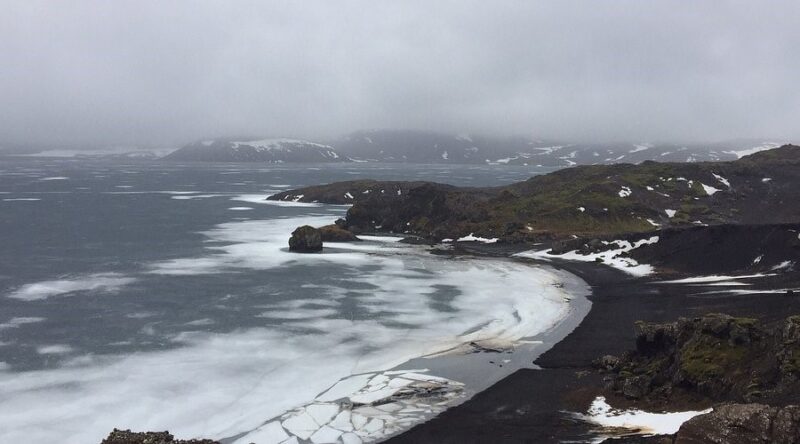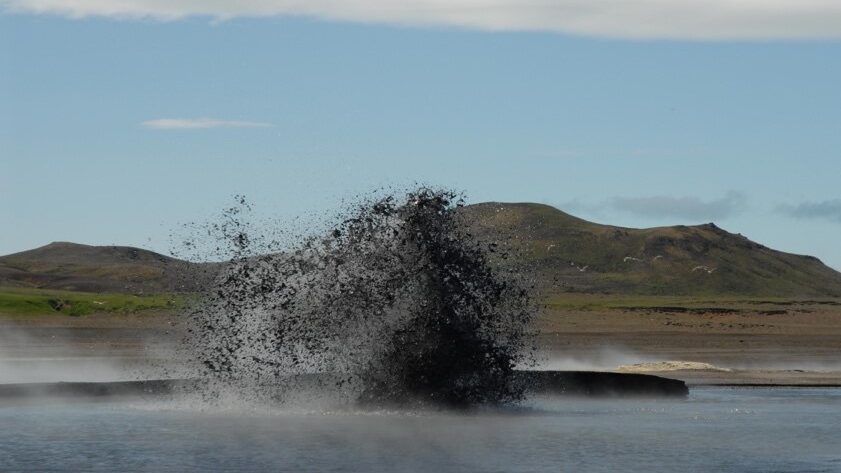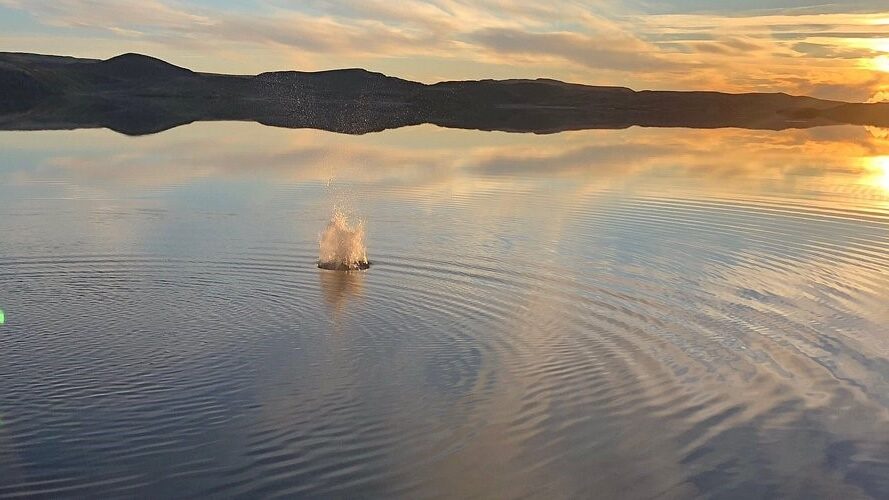ISLAB

The ISLAB project aims to demonstrate whether there is (1) a link between hydrothermal activity and the cyclicity of active volcano-tectonic processes in Iceland, and (2) whether the nature and adaptations of microbial communities under hydrothermal influence are correlated with these cyclical processes, both over short and long time scales (Holocene).
The study area is Iceland’s Reykjanes peninsula, which is exceptionally tectonically and volcanically active and is the subaerial extension of the Reykjanes oceanic ridge, located to the north-east of the Atlantic. It contains an endoreic lake, Kleifarvatn, which is up to 97 m deep and has several hydrothermal vents on its floor and shores.
The ISLAB project follows recent seismological results from the Reykjanes peninsula suggesting that active faults modulate hydrothermal convection over time. The flow, temperature (T) and chemical composition of hydrothermal fluids would then be time-dependent and linked to seismic cycles along major faults and, potentially, also to fissural volcanic eruptions (diking).
ISLAB aims to explore in detail the short-term (3 years) and long-term (~10,000 years) validity of a potential link between the cyclicity of active volcano-tectonic processes, hydrothermal activity and life.
The first part of the project aims to characterise the dependence of the permeability of the Icelandic crust along the active rift on transient volcano-tectonic phenomena (earthquakes and dyking) over the duration of the scientific project. Several methods will be used to image fluid circulation in the crust of the Reykjanes Peninsula, such as dynamic seismic tomography (carried out on different time steps), which will require the installation of a dense network of seismic stations covering around 300 km2. Direct measurements over 2 years of fluid pressures, T and variations in the chemical composition of the Kleifarvatn hypolimnion will be made using a system of sensors installed at the bottom of the lake in spring 2025.


The second part of the project aims to explore the links between volcano-tectonic processes, the cyclical phenomena of hydrothermal recharge and discharge from the hydrothermal springs of Lake Kleifarvatn, associated with significant variations in the lake level, and the microbial life present in lake sediments. Our first research hypothesis is that volcano-tectonic events control hydrothermal activity and that the sediments contain horizons with geological traces of past tectonic events and geochemical signatures of past hydrothermal activity that are more pronounced in the vicinity of the hydrothermal system. Our second research hypothesis is that this tectonic activity, which controls hydrothermal activity, also indirectly controls the microbial life in these sediments in terms of the number of cells present, the diversity of species present and the responses and adaptations of these species.
The methods used to answer the scientific questions raised include geophysical and chemical monitoring on land and underwater, heat transfer modelling, coring and geochemical, mineralogical and isotopic analysis of sediments, lake-bottom hydrodynamics and the study of microbial communities in lake sediments (metagenomics, metabarcoding, Q-PCR, quantification of cells and spores, etc.).
ISLAB offers significant scientific potential for understanding the tectonic factors controlling fluid dynamics at ridges, the Earth’s cooling processes and the responses and adaptations of life. It will not only provide a better understanding of the subtle transient processes governing hydrothermal convection, but will also explore a radically new area, namely the potential indirect dependence of life on mechanical energy due to active and time-dependent episodic tectonic and volcano-tectonic processes (earthquakes, volcanic eruptions).
Project coordinators: Laurent GEOFFROY (Geo-Ocean, UBO) and Karine ALAIN (BEEP, directrice de recherche CNRS)
ISblue research unit teams:
- Geo-Ocean (CNRS, Ifremer, UBO, UBS) : Laurent Geoffroy, Marina Rabineau, Thibaut Barreyre, Jérôme Goslin, Antoine Crémière, Thomas Giunta, Léonie Delaleau, Julie Perrot, Sara Bazin, Christophe Prunier, Pascal Pelleau.
- BEEP (Ifremer, UBO, IUEM, CNRS) : Karine Alain, Mélanie Le Moigne (doctorante), Xavier Philippon, Françoise Lesongeur.
- LEMAR (UBO, CNRS, IRD, Ifremer) : Hélène Planquette, Matthieu Waeles
- UAR 3113 : Peggy Rimmelin-Maury
External collaborations:
- University of Iceland : Ármann Höskuldsson;
- ISOR (Islande) : Þorbjörg Ágústsdóttir, Egill Árni Guðnason
- Matis (Islande) : Viggó Þór Marteinsson, Alexandra Klonowski
- Center for Deep-Sea Research, University of Bergen UiB (Norvège) : Steffen Leth Jørgensen ;
- MAPIEM (Toulon) : Pauline Vannier
 Attention, vous utilisez un navigateur peu sûr !
Attention, vous utilisez un navigateur peu sûr !